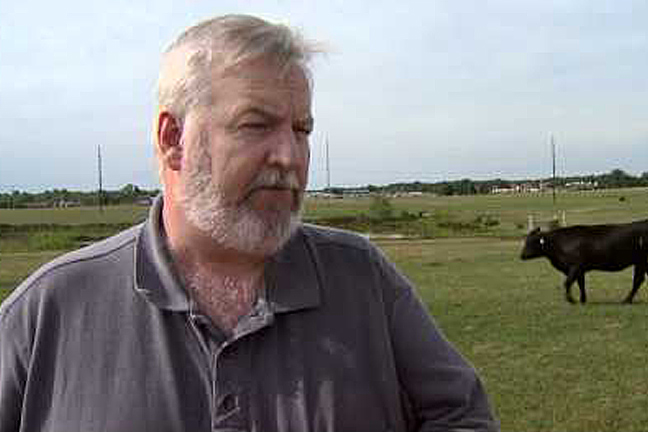
Agricultural News
Peel on North American Beef Cow and Heifer Situation
Mon, 15 Dec 2014 11:48:02 CST
 Derrell S. Peel, Oklahoma State University Extension Livestock Marketing Specialist, writes in the latest Cow/Calf Corner newsletter.
Derrell S. Peel, Oklahoma State University Extension Livestock Marketing Specialist, writes in the latest Cow/Calf Corner newsletter.
Canada
On July 1, 2014, Canada reported an all cattle inventory of 13.33 million head, down one percent from 2013. This total includes 3.92 million beef cows, also down one percent from one year ago. The July 1 Canadian beef replacement heifer inventory was 616,000 head, down 4 percent from 2013 levels. Weekly Canadian cattle slaughter data for the year to date through early November indicates that total cattle slaughter is up 4.2 percent year over year, including a 10.4 percent increase in heifer slaughter. Beef cow slaughter in Canada is down 8.1 percent for the same period.
U.S. imports of Canadian cattle for the first ten months of 2014 were up nearly 20 percent, including a 7.3 percent increase in cattle for immediate slaughter and a 42 percent increase in feeder cattle. Total cattle for immediate slaughter includes a two percent increase in slaughter cows and a 15 percent increase in slaughter heifers for the year to date. Among feeder cattle imports from Canada, year to date totals include a 68 percent increase in feeder heifers and a four percent increase in feeder steers. Roughly 95 percent of the year over year increase in feeder cattle imports from Canada consists of heifers, an increase of over 100,000 head.
Increased heifer slaughter in Canada combined with increased heifer exports to the U.S. suggests that heifer retention is not happening in Canada. This is consistent with decreased beef cow and beef replacement inventories and, reduced Canadian beef cow slaughter notwithstanding, suggests that the Canadian beef cow herd is not expanding or at most very slowly in 2014. If herd expansion in Canada begins or accelerates in 2015, it will limit or reduce domestic Canadian cattle slaughter and/or cattle exports to the U.S.
Mexico
The Mexican beef cow herd appears have declined in recent years and is continuing to decrease. Data on the Mexican cattle industry is scarce but the data that does exist is consistent with anecdotal indications that Mexican cattle numbers have tightened considerably in recent years. Industry sources indicate that cow numbers have continued to decline and cow slaughter has continued at relatively high levels to support domestic beef production. Current USDA Foreign Agricultural Service estimates indicate that the beef cow herd and total cattle slaughter will decrease year over year in 2014 and 2015.
Mexican cattle exports to the U.S. declined 33 percent in 2013 following sharply elevated cattle exports in 2011 and 2012 due to drought. The 2012 exports included a record level of heifers, which more than compensated for fewer steer exports to result in the second largest Mexican cattle export total. Mexican cattle exports to the U.S. in 2014 are up nearly 15 percent from 2013 levels for the first ten months of the year. Similar to 2012, the year over year increase in U.S. imports of Mexican cattle in 2014 include a proportionately larger increase in heifers compared to steers. 2014 U.S. imports of Mexican heifers are up 30 percent year over year although heifers make up only 19 percent of total year to date Mexican cattle exports. Preliminary weekly data for imports of Mexican cattle in November and early December indicate a slower pace of year over year imports since October but that heifer exports continue to increase proportionately more than steers. These data show that heifers account for 42 percent of the year to date increase in 2014 Mexican cattle exports to the U.S. Increased Mexican heifer exports since 2011 make it unlikely that heifer retention has been or is occurring at this point in time.
U.S. Implications
The Canadian and Mexican cow and heifer situation has implications for herd size and cattle production on the North American continent in coming years and more immediately on current feeder supplies. Record U.S. cattle prices provide a tremendous pull for cattle of all types and from all possible sources. For the first ten months of 2014, total feeder cattle imports are up 22 percent, i.e. some 219,000 head. Over 60 percent of that year over year increase in feeder cattle imports from Canada and Mexico were heifers. It appears that beef cow herd expansion has not started in Canada and Mexico and when it does there is likely to be fewer imported cattle, especially heifers, available to supplement U.S. feeder cattle supplies.
There is little doubt that beef cow herd expansion began in the U.S. in 2014. Beef cow slaughter is down over 18 percent and the nearly 8 percent year to date decrease in heifer slaughter is a strong indication of increased heifer retention. U.S. beef cow inventories will likely show a modest increase into 2015. However, cow and heifer numbers do not appear to be expanding in Canada and Mexico and North American beef cow herd inventories will remain tight for many months. Canada and Mexico have not yet started to feel the short term cattle numbers squeeze that is associated with the early stages of herd expansion.
WebReadyTM Powered by WireReady® NSI
Top Agricultural News
More Headlines...




















